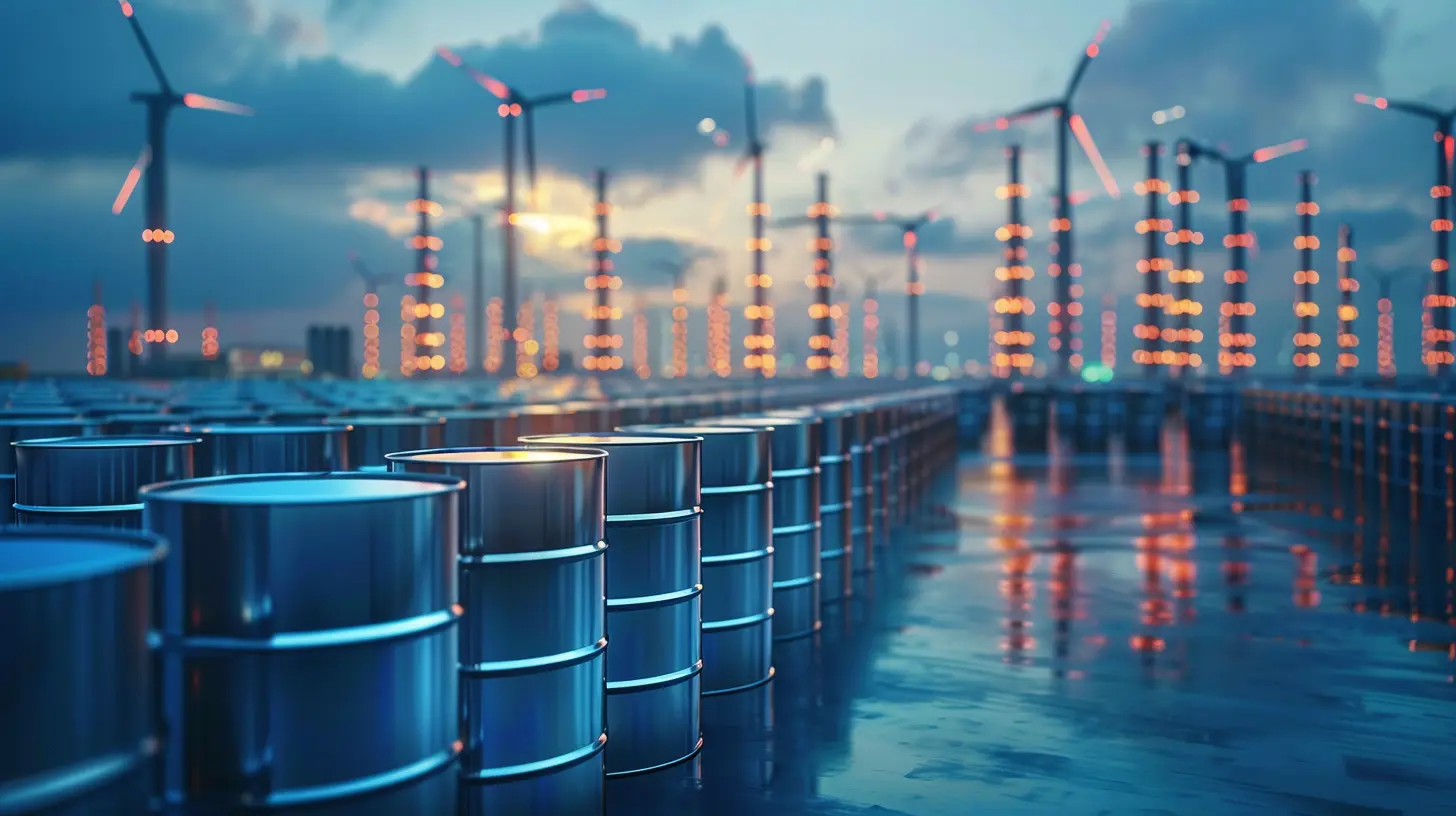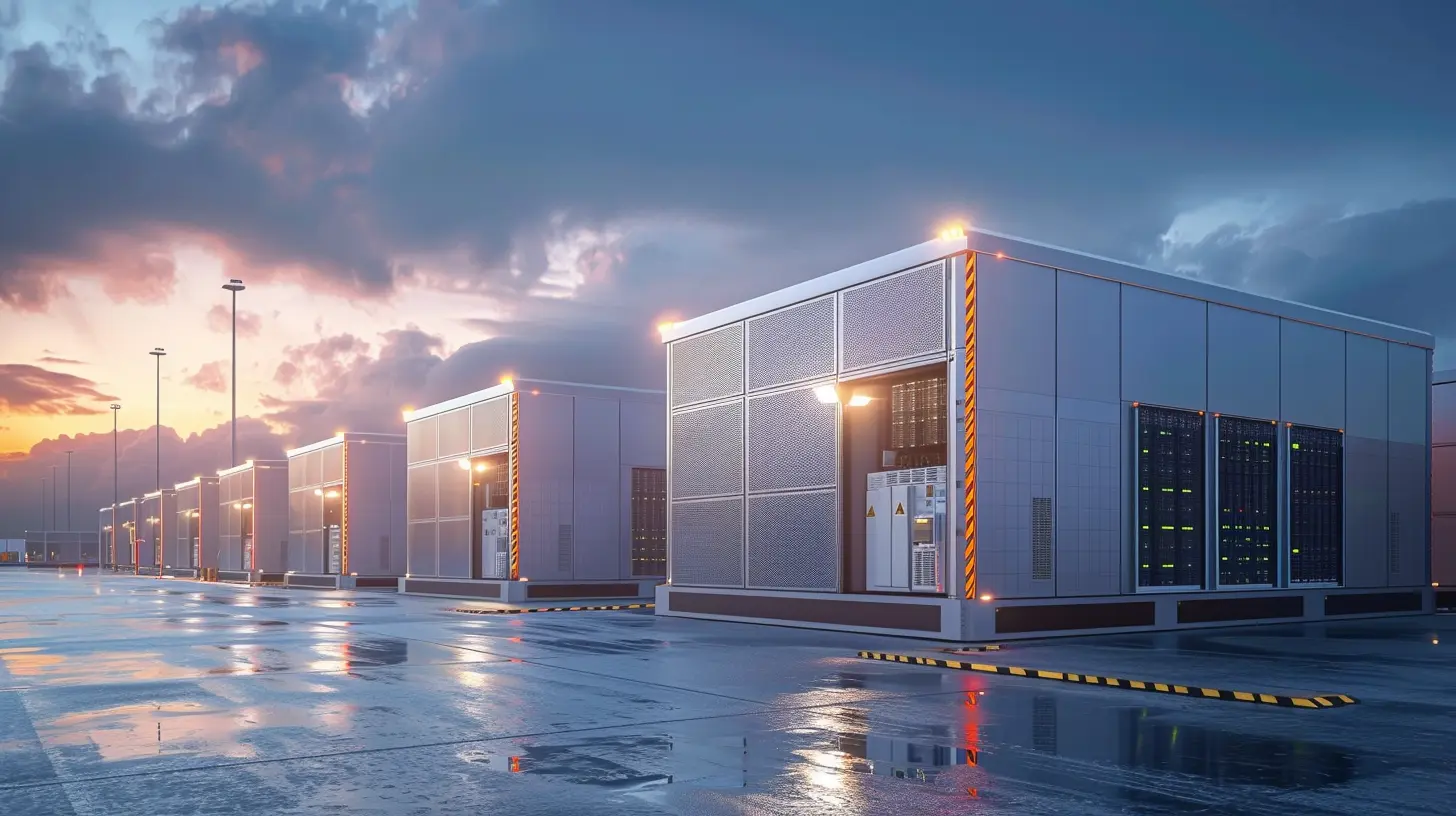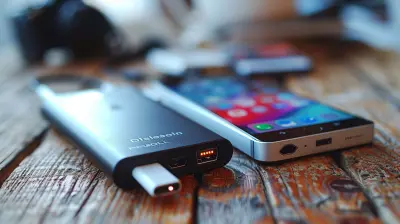Can Flow Batteries Be the Solution for Large-Scale Energy Storage?
7 November 2025
Renewable energy is on the rise, but there's one big problem—storage. Solar and wind power are great, but they don’t produce energy 24/7. When the wind stops blowing or the sun sets, we need a way to store all that excess energy for later use. This is where flow batteries might come into play.
Could they be the game-changing solution we’ve been waiting for? Or are they just another overhyped tech that won’t live up to expectations? Let’s dive in and take a closer look.

What Are Flow Batteries?
First, let’s break it down. Flow batteries are a type of rechargeable battery where the energy is stored in liquid electrolytes. These electrolytes are pumped through an electrochemical cell, generating electricity. Unlike conventional batteries (like lithium-ion), where energy is stored in solid materials, flow batteries keep everything in a liquid state.Think of it like a fuel tank but for electricity. The bigger the tank, the more energy you can store. This makes flow batteries particularly interesting for grid-scale energy storage since they can be scaled up relatively easily.

How Do Flow Batteries Work?
Flow batteries rely on two tanks filled with different liquid electrolytes. These tanks store energy, and when electricity is needed, the liquids flow through a membrane that allows ions to pass while keeping the solutions separate. This movement of ions generates an electric current, which can be used to power homes, businesses, and even entire cities.One of the major advantages of this design is the separation of power and energy capacity. In standard batteries, if you want more energy, you need a bigger battery. But with flow batteries, you can simply increase the size of the tanks without making the entire system more complex.
Key Components of a Flow Battery
- Electrolyte Tanks – Hold the liquid that stores energy.- Electrochemical Cell – Where the magic happens—electricity is generated here.
- Pumps & Pipes – Move the electrolytes from the tanks to the cells.
- Membrane – Allows ion exchange while keeping the electrolytes separate.

Why Are Flow Batteries Being Considered for Large-Scale Storage?
1. Scalability
One of the biggest selling points of flow batteries is their scalability. Unlike lithium-ion batteries that become exponentially more expensive as they grow larger, flow batteries can simply increase tank size. This makes them a cost-effective solution for storing vast amounts of energy from renewable sources.2. Long Lifespan
Flow batteries don’t degrade the same way lithium-ion batteries do. Traditional batteries lose capacity after repeated charging cycles, but flow batteries can last for decades with minimal degradation. This makes them a solid choice for long-term energy storage solutions.3. Safety
Safety is always a concern when dealing with large-scale energy storage. Lithium-ion batteries are prone to overheating and even catching fire (remember those exploding phones?). Flow batteries, on the other hand, are much safer because their energy is stored in liquid form, reducing the risk of catastrophic failures.4. Renewable Energy Integration
Renewable energy sources are unpredictable, producing excess electricity when it’s not needed and falling short during peak demand periods. Flow batteries can help store surplus energy when it's available and release it when demand spikes, creating a stable and reliable power supply.5. Sustainability
Unlike lithium-ion batteries, which require rare and often environmentally damaging materials like cobalt and nickel, many flow batteries use more abundant and recyclable materials, making them a greener choice.
The Challenges Facing Flow Batteries
While flow batteries have a lot of potential, they’re not perfect. Some significant obstacles have kept them from becoming mainstream.1. High Initial Costs
While flow batteries can be cheaper in the long run, their upfront cost is still high. The infrastructure required to build and install these systems is expensive, which can deter large-scale adoption.2. Limited Energy Density
Flow batteries are bulkier than lithium-ion batteries. If you need a compact energy storage solution (like in electric vehicles), flow batteries aren’t the best choice. Their lower energy density makes them less practical for applications requiring lightweight and compact storage.3. Efficiency Losses
Flow batteries aren’t as efficient as lithium-ion batteries. Energy is lost when pumping electrolytes through the system, leading to lower round-trip efficiency. This means they may not be the best solution when high efficiency is a priority.4. Material and Infrastructure Constraints
Some flow battery designs still rely on vanadium, a metal that isn’t cheap or widely available. While alternative chemistries are being explored, there's a long road ahead before we find a universally viable material.Flow Batteries vs. Lithium-Ion: Which One Wins?
| Feature | Flow Batteries | Lithium-Ion Batteries ||---------|---------------|---------------------|
| Energy Density | Low | High |
| Lifespan | 20+ years | 5–15 years |
| Scalability | High | Limited |
| Safety | High | Moderate (Fire risk) |
| Cost | High upfront, low long-term | Lower upfront, higher maintenance |
| Efficiency | Lower (~70-80%) | Higher (~85-95%) |
Flow batteries are superior for massive energy storage applications, while lithium-ion batteries are better suited for smaller-scale energy storage and mobility solutions (like EVs).
Are Flow Batteries the Future of Energy Storage?
So, can flow batteries be the solution for large-scale energy storage? The answer is maybe—but they won’t be the only solution.While flow batteries have clear advantages for grid-scale applications, they have limitations preventing them from replacing lithium-ion in all scenarios. The best approach might involve a hybrid system, where different battery types complement each other rather than compete.
The Road Ahead
For flow batteries to reach their full potential, they need:- Cost reductions through better materials and manufacturing processes.
- Higher efficiency improvements to compete with lithium-ion batteries.
- More investments from governments and the private sector to accelerate development.
If these challenges are addressed, flow batteries could play a crucial role in shaping the future of sustainable energy storage.
Final Thoughts
Flow batteries aren’t perfect, but they offer a lot of promise. Their ability to scale, long lifespan, and safety advantages make them one of the most exciting options for large-scale energy storage.Will they become the dominant storage technology? That remains to be seen. But one thing’s for sure—we need better energy storage solutions to make renewable energy the primary source of power. Flow batteries could be a key piece of that puzzle.
all images in this post were generated using AI tools
Category:
Battery TechnologyAuthor:

John Peterson
Discussion
rate this article
1 comments
Patience Ford
Great article! Flow batteries present an exciting potential for large-scale energy storage. Their scalability and sustainability could revolutionize how we harness renewable energy. Looking forward to seeing advancements in this technology! Keep up the good work!
November 8, 2025 at 12:08 PM


